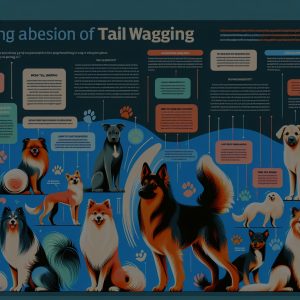
Dogs are known for their endearing and sometimes puzzling behaviors, and one of the most fascinating of these is their tendency to chase their own tails. This behavior can be both amusing and perplexing to watch, leading many pet owners to wonder what drives their furry companions to engage in such antics. In this article, we will delve into the psychology behind tail chasing in dogs and explore the possible reasons for this behavior.
The Intriguing Habit of Tail Chasing
The sight of a dog chasing its tail is a common one, often eliciting chuckles from onlookers. This behavior typically begins in puppies and may continue into adulthood for some dogs. While it may seem simply like a playful act, tail chasing can also be a sign of underlying issues such as boredom, anxiety, or even medical conditions. Some dogs may engage in tail chasing as a way to relieve stress or to seek attention from their owners.
Understanding the Psychology Behind It
Tail chasing behavior can be linked to a dog’s natural instincts and cognitive development. In the wild, puppies may playfully chase each other’s tails as a form of social interaction and to learn important skills such as coordination and agility. In a domestic setting, this behavior may persist as a way for dogs to release pent-up energy or as a response to feelings of frustration or excitement. For some dogs, tail chasing may also serve as a self-soothing mechanism in times of stress or discomfort.
Uncovering the Reasons for Canine Behavior
There are various factors that may contribute to a dog’s propensity to chase its tail. One common reason is simply the thrill of the chase, as some dogs find the activity stimulating and enjoyable. Additionally, dogs who are not adequately mentally or physically stimulated may resort to tail chasing as a way to alleviate boredom. In some cases, medical conditions such as allergies, skin irritations, or problems with anal glands may prompt a dog to chase its tail in an attempt to relieve discomfort. It is important for pet owners to observe their dog’s behavior closely and consult with a veterinarian if they have concerns about excessive tail chasing.
While tail chasing in dogs may seem like a lighthearted and harmless behavior, it is important for pet owners to understand the potential reasons behind it. By recognizing the underlying factors that may drive this behavior, owners can better address their dog’s needs and ensure their overall well-being. Whether it be through increased exercise, mental stimulation, or medical intervention, there are steps that can be taken to help dogs who exhibit excessive tail chasing. Ultimately, a deeper understanding of canine behavior can lead to a stronger bond between humans and their beloved furry companions.
Speaking of canine behaviors, you might be interested in learning more about the fascinating world of [animal behavior](https://en.wikipedia.org/wiki/Animal_behavior) and how it relates to tail chasing. Additionally, understanding the [psychology of dogs](https://en.wikipedia.org/wiki/Dog_behavior) can provide deeper insights into why our furry friends engage in such antics. If you’re curious about the broader aspects of dog care and well-being, exploring topics like [canine enrichment](https://en.wikipedia.org/wiki/Environmental_enrichment_(animals)) can be very enlightening. Each of these subjects offers valuable information that can help you better understand and nurture your pet’s needs.










